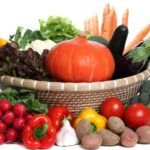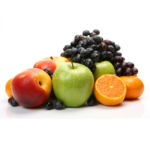Cleansing with Food
This information is not meant to diagnose or prescribe. Please seek appropriate advice from your health-care provider.
I will admit to being a bit of a rebel in the holistic healing world.
How to do a gentle cleanse
When a new client comes in, I do not automatically recommend an herbal cleanse or a fast. I prefer to use the first few appointments to work slowly and methodically with dietary changes and a few well-chosen supplements to begin to alter the chemistry of the body very gently. Cleansing is a labor-intensive activity. If a body is not well supported, then doing too stringent of a cleanse can cause a loss of vitality and can stress and further weaken the organs, producing results exactly opposite to what was being sought originally.
How to choose which foods to use in a cleanse
In working with foods as cleansing agents, it is important to take into consideration not only the condition of the body (including stressed, weakened, or malfunctioning organs), but also the season, the weather, and the climate. Indeed, the season, weather, and climate should all be considerations in our everyday choices of foods.
I live in the foothills of the Canadian Rockies. We usually say, with our tongues planted firmly in our cheeks, that we have nine months of winter and three months of bad sledding. While this is an exaggeration, it does help to define the climate differences that exist.
Many books about cleansing are written in California, Florida, or Hawaii. Those climates produce fruits and vegetables that are very different from what we grow here and may be different from what grows in your climate, too. Any fruits and vegetables that are produced both there and here usually come at different times of the year.
As you study this article, you will need to think critically about what grows in your climate and when it grows in your climate. Your daily diet and cleansing programs should use foods that are in their proper season of harvest and/or proper storage life where you live.
Seasonal cleansing
The earliest springtime fruits and vegetables in your climate will usually be cleansing in nature. Vegetables that are harvested in the heat of the summer are usually cooling. Autumn-harvested vegetables will begin the winter building process, and vegetables that store well in a root cellar are the builders and heat generators. By using vegetables in their natural season and their proper climate, we will reap the benefits of a natural cycle of building and cleansing.
Think about the following list of fruits and vegetables. Do they grow in your climate? If they do, you can usually consider them a helpful food in their natural harvest season. If they don’t grow in your region, you may be able to use them for a short period of time as a part of a food fast/cleanse, but they should not become a regular part of your diet.
In a food fast/cleanse, you should be careful to choose foods that are healthful. Consuming primarily low-starch vegetables for one to two weeks (focusing on climate-based cleansing vegetables) is a fabulous way to rest the digestive tract somewhat, cleanse tissues, and lay a foundation for building and strengthening the body.
If fruits are used they should not be eaten with the vegetables, and should be climate-based. Whether the vegetables and fruits are cooked or not will depend on the weather and the strength of the digestive tract. Always cook (steam) the vegetables or fruits in cool or cold weather or if the gastro-intestinal tract is compromised in any way.
Using raw foods or juices
In hot weather and with a strong gastro-intestinal tract the vegetables and fruits may be eaten raw if desired. Fermented vegetables are even better than raw. I also believe, as the result of my work with clients, that food fasts/cleanses should be done with whole foods and not with juices. Whole foods have a balance that is destroyed when juicing occurs. Vital fibre and nutrients are discarded.
Juices may be more beneficial for severely weakened people, but dosage and choice of juice must be carefully monitored.
Using Dr. Bernard Jensen’s writings as a guide, let’s look at several foods that have cleansing properties. Again, as you study this list, ask yourself if this food grows in your climate. Foods that do not grow in your climate may be used for short periods of time to aid in cleansing, but it is my opinion that the best cleansing protocol uses foods from the client’s climate.
Fermenting vegetables to use in a cleanse provides intestinal flora, also known as probiotics, which are very beneficial to the gut, digestion, and immune system. During a cleanse it is often wise to include ¼ - ½ c of raw fermented vegetables at every meal. There are many resources online that can teach you how to ferment vegetables.


Cleansing benefits of specific foods
Apricots have a laxative effect and are very alkalizing.
Beets are high in minerals, clean acid out of the bowel, cleanse the gallbladder, liver, elimination system, digestive system, lymphatic system.
Cabbage can be used as packs for eczema, varicose veins, and leg ulcers; taken by mouth aids in correcting constipation. Raw cabbage in the diet keeps the skin clear. Raw sauerkraut juice combined with tomato juice makes a strong laxative.
Celery is a good blood cleanser, neutralizes acids, halts fermentation, aids digestion. May need to be steamed or fermented for people with sensitive gastro-intestinal tracts.
Cherry, especially black cherry, is an excellent laxative, gets rid of toxic waste, alkalizing.
Chicory as an enema increases peristaltic action.
Cucumber purifies the bowel.
Currants (red), for dysentery.
Dandelion greens cleanse the liver, help the flow of bile, relieve eczema and skin rashes.
Elderberry is a good general tonic cleanser, especially for the reproductive and glandular system.
Figs are laxative due to mucin and pectin.
Grapes, especially concord grapes, are laxative due to high magnesium content, cleanse the liver, eliminate hardened deposits, good as a pack for tumors.
Leeks loosen phlegm in the throat and sinuses, blood purifier.
Lemon aids body in getting rid of toxic materials (especially in the liver), eliminates catarrh (buildup of mucus in nose or throat).
Mango is a disinfectant in the body, blood cleanser, helps eliminate body odor.
Parsley is a blood purifier and bowel stimulant.
Parsnips improve peristalsis in the bowel.
Pomegranate is slightly purgative.
Raspberries are general cleansers of the mucous membranes; remove catarrh and toxins.
Squash (winter) promotes bowel peristalsis, rich in magnesium.
Strawberries are a general tonic, especially for the intestinal tract.
Turnips are cleansing for catarrhal conditions, including bronchial and throat.
Climate-based Cleansing
In our cold climate, a food fast/cleanse during the winter would consist largely of steamed or souped carrots, onions, leeks, squash, turnips, beets, parsnips and cabbage. These ingredients would store well in a root cellar. If a particular focus was needed, such as bowel cleansing, we would focus more on squash, parsnips and beets.
In the summer we would eat a lot of strawberries, raspberries, and dandelion greens.
Every climate has its own natural assortment of vegetables and fruits. These are what time has proven to be the most beneficial foods for people living in that climate.
Bibliography
Jensen, Bernard. Foods that Heal, 1988. Garden City Park, New York, Avery Publishing Group.
For personal guidance for your health, including using foods as a form of cleansing, contact me by email or phone to book an appointment. Zoom, phone, and face-to-face appointments are available. My contact info is at the top of the page.
